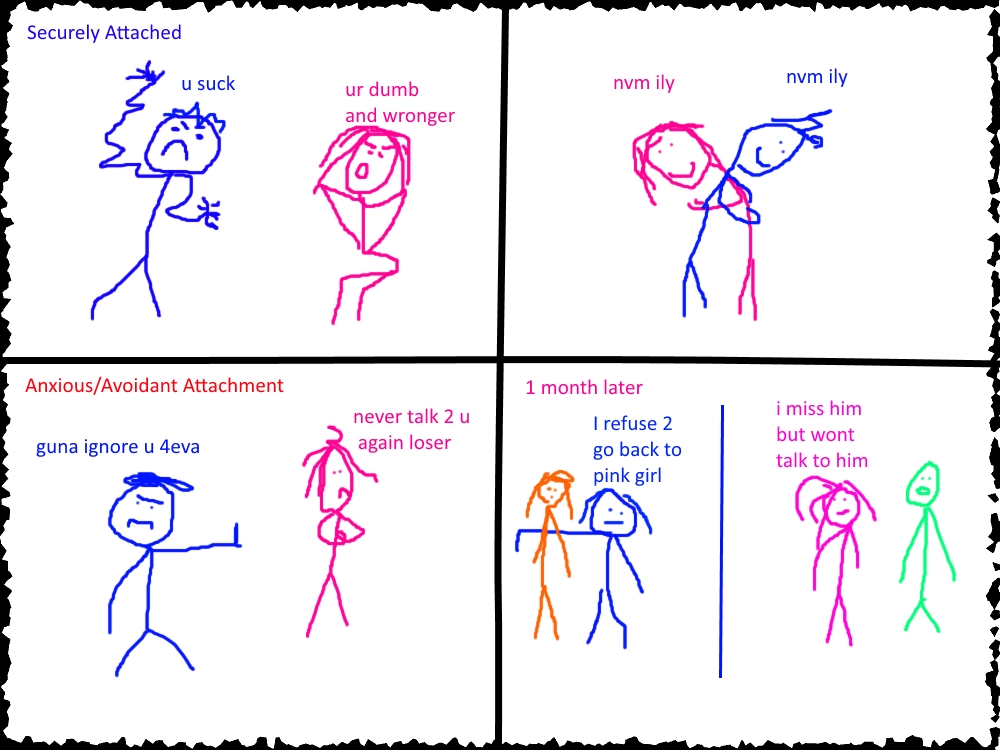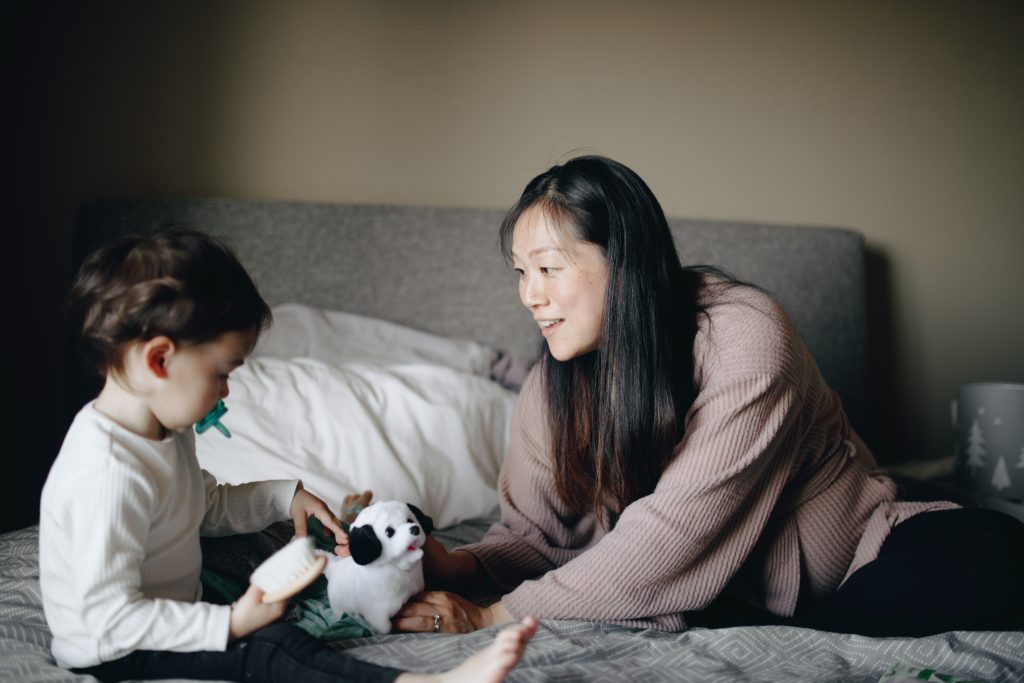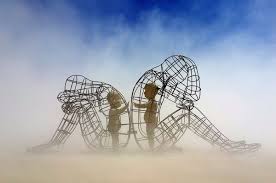Do you become overly clingy or jealous? Or do you always appear to be more engaged than your partner? Perhaps you want to be with someone but withdraw as soon as things become emotionally intimate?
It’s because of the role of attachment styles in adult relationships.

Since the very beginning of our existence, we start forming relationships. Primarily, it’s with our caregivers. But soon, it’s extended with all people that keep entering and leaving us through the journey of our lives.
While entering a new relationship or befriending a stranger, people subconsciously look for the familiarity they’re so used to from childhood. Be it family, friends, neighbors, colleagues, spouse- the first imprints of relationships come into display.
What is Attachment Theory?
Attachment theory was coined by Psychologist John Bowlby. It involves how people form bonds as adults and how intimacy in childhood plays a key role in that. This theory was developed while he was studying the reason for babies being upset upon being separated from a parent.
How you bonded with your caregivers as a child, determines how your adult relationships will be.
Bowlby discovered that babies used attachment behaviors like crying, searching, and clinging when they felt their parent or caregiver was not around. This established a foundation on which further research is done.
Behind the mask of indifference is bottomless misery and behind apparent callousness, despair.
John Bowlby
As people grow up, each develops an attachment style of their own. Even you. And it’s largely based on how you have cared in your childhood.
Mary Ainsworth and the Strange Situation
“The Strange Situation” is actually a format of experiment formed by psychologist Mary Ainsworth. She was a student of John Bowlby and carried on his work. The team brought in infants and observed their behaviors as various adults came in and left the room.

The entire experiment has eight stages. Each of them lasts more or less 3 minutes. The whole point was to observe and record their response to their caregiver leaving and returning to them.
- Only Mother and Baby
- A stranger with the Mother & Baby
- Just Stranger and Baby
- Mother returns
- Stranger leaves
- Mother leaves, leaving the baby alone
- Stranger returns
- Mother returns and stranger leaves
Observations Through “The Strange Situation”
- Some infants were upset when their mothers were gone. Ignored the stranger when alone, but behaved friendly when their mother was present. They were visibly happy after their mother returned. Seventy percent of children studied fell into this category. They had Secure Attachment.
- Another group (15%) of children displayed severe distress upon their mothers leaving the room. They were particularly fearful of the stranger. However, when their mother returned, they approached them but rejected contact. This group was children with Ambivalent Attachment
- Again, there was a small percentage (15%) that was indifferent to their mothers leaving. Played cheerfully with the stranger and hardly noticed when the mother returned. This group of children was Avoidant.
- Disorganized Attachment
Later in 1990, Main and Solomon added another type called ‘disorganized’. They were very small in terms of percentage and showed inconsistency in their behaviors.
The 4 Attachment Styles in Adult Relationship
Attachment styles develop at an early age when a child cannot even speak about it. The way it’s taken care of is how the child perceives its close relationships in the long run.
Adults display mainly four attachment styles. Only one of those is healthy and desirable; that is the secure one. The rest of them express various kinds of insecurity.

Attachment Styles in Adult Relationships 1: Secure
The secure one is the boring camp. These people are at ease expressing their emotions openly.
Individuals with a secure attachment type can rely on their partners while also allowing their partners to rely on them. Honesty, tolerance, and emotional connection are the foundations of relationships.
The secure attachment type thrives in partnerships but also does not dread being alone. They do not rely on their partners’ responsiveness or approval, and they have a positive attitude about themselves and others.
Attachment Styles in Adult Relationships 2: Ambivalent (AKA ‘Anxious-Preoccupied’)
These kinds of people live in a utopia regarding the relationships they build throughout their life. They have this assumption that the people in their life somehow would solve all their problems in life. So generally they tend to be clingy with their dear ones.
People that have this form of attachment have a low self-image but a positive perspective of others. The nervous adult frequently needs their partner’s acceptance, support, and response.
Attachment Styles in Adult Relationships 3: Avoidant (AKA ‘Dismissive-Avoidant’)
They see themselves as ‘lone wolves’: powerful, independent, and self-sufficient. Not necessarily in terms of physical touch, but rather on an emotional level.
Having high self-esteem and a favorable self-image. The dismissive-avoidant personality does not want to be dependent on others or to seek support and approval from social relationships.

Adults with this attachment style avoid emotional connection in general. When confronted with an emotionally charged circumstance, they also tend to hide or suppress their sentiments.
Attachment Styles in Adult Relationships 4: Disorganized (AKA ‘Fearful-Avoidant’)
This type of person kinda goes back and forth and shows a bit of both the insecure types mentioned before. As the name says, they’re fearful. This means they’re afraid of abandonment. At the same time- they’re avoiding any kind of relationship.
These people show kind of bizarre actions while being in a relationship. They want company but are careful to not come across as needy. Therefore, it results in a confusing situation for their dear ones.
Possible Reasons Behind Insecure Attachment
Insecure attachment can be caused by a variety of factors.

- There are a variety of reasons why even the most loving and caring parent may fail to establish a solid attachment bond with their child. Your insecure attachment could be caused by one or more of the following factors:
- Having an inexperienced or young mother who lacks the necessary parenting abilities.
- Your caregiver may have developed depression as a result of isolation, a lack of social support, or hormonal issues, prompting them to leave the caring job.
- Because of their drug or alcohol addiction, your primary caregiver was unable to appropriately interpret or respond to your physical or emotional requirements.
- Traumatic events that disrupted the connection process, such as a catastrophic illness or an accident.
- Physical neglect, such as inadequate nutrition, insufficient exercise, or medical concerns are all examples of physical neglect.
- Neglect or misuse of one’s emotions. For example, as a youngster, your caregiver paid little attention to you, made little effort to understand your feelings, or verbally abused you.
- Whether it’s physical harm or sexual transgression, physical or sexual abuse is unacceptable.
- Because of illness, death, divorce, or adoption, you may be separated from your primary caregiver.
- The primary caregiver’s inconsistency. For example, at daycare centers, you may have had a succession of nannies or workers.
- Moves or placements on a regular basis. Because you spent your early years in orphanages or moving between foster homes, for example, your environment was constantly changing.
How To Deal with Your Insecure Attachment?
Is it possible to change the attachment style that has been with you forever? Here are some tips you can follow if you’re looking to gain a more secure attachment style.
- Working on your communication can increase a great deal of understanding. Be clear and straightforward when there is something that upsets you. You might be surprised to know that it wasn’t even intentional to hurt your emotions.
- When you communicate with others, you constantly send and receive nonverbal signals through gestures, posture, and the amount of eye contact you make, among other things. These nonverbal clues convey powerful messages about how you truly feel about someone.
- Improving your emotional intelligence. Emotional intelligence is the ability to understand, interpret, and control one’s own emotions and impulses way in order to empathize with others.
- Mastering your emotions and how to control them can allow you to better express your concerns and feelings to your relationship, as well as comprehend how your partner is truly feeling.
- A healthy, supportive relationship with one who makes you feel loved would help you develop a sense of security. Similarly, building deep friendships with these people can aid you in recognizing and adopting new patterns of behavior.
- Resolve whatever childhood trauma you may have experienced. Childhood trauma can be caused by anything that makes you feel uncomfortable, such as a dangerous or insecure home environment, separation from your primary caregiver, significant sickness, neglect, or abuse.
Attempt to conquer the suffering, regain emotional balance, and relearn how to engage and connect in relationships.
Can There Be A Mixture of Attachment Style?
Of course, one person can have multiple attachment styles. One person can feel secure in his career because of all the things he has earned by dint of hard work. On the contrary, he can be extremely fearful about his relationship with his partner because it’s where his deepest fears come into play.
Again, the same person who was very anxious and avoidant can have his faith restored by someone who cares. Thus, a person can have a mixture of styles at the same time or different phases of life. Both are normal.
Possibility of Developing A New Attachment Style
You had no control over the kind of childhood you had. However, as an adult, it’s very much possible for you to understand your style of attachment. If you can even address it properly, you can gift yourself a better emotional bond with your close ones.
This is one of the greatest perks of understanding what kind of attachment style you have. That you can navigate it to feel more secure.
- Unload your baggage. We all come with one and sharing with the right people helps for sure.
- Identify the repeated patterns so that you can be careful about them
- Try not to be judgemental of people and give them some time before making a decision about them
Why You Should Know About Attachment Styles in Adults?
It’s not ‘absolutely necessary’-necessary to know. But knowing sure helps understanding yourself and the people you care about. And you’ll see why it’s okay to have mixed feelings about your parents too.
Self-awareness and awareness in general give you the power to identify why certain things are the way they are. If you have an unhealthy pattern and unhelpful behaviors-you can consciously make a decision to change it for the better. Challenge any attachment that does not support your well-being and change it.
A lot of people have been holding themselves back from actually interacting in life. Even when they do, they find it hard to do it with an open mind because of their attachment issues. But it’s not a big deal only if you know how it works.
Last But Not Least: Be Kind
Personality is not a permanent thing so if you find yourself in the three insecure sections, do not freak out. because you can always have it developed. However, having it identified gives you an edge to have control over it.

Last but not least, be kind to yourself and cut slack for those who are beating themselves up for something they aren’t responsible for.
So, have you found out your attachment style?


























Leave a Reply